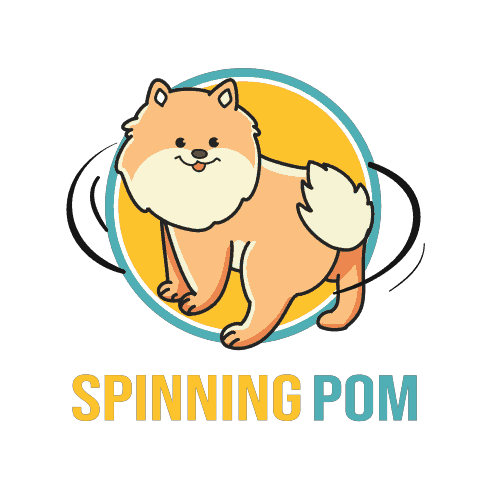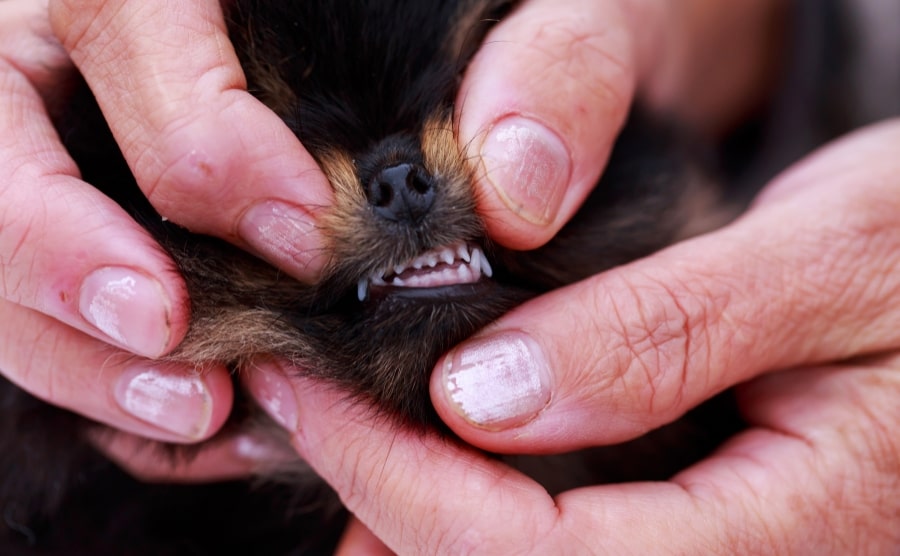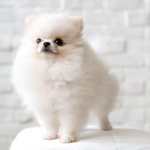Have you ever thought about Pomeranian teeth extraction? You might if your Pomeranian has dental disease, and you’re worried about its progression. However, you haven’t got the slightest idea of what to expect when it comes to teeth extraction in dogs. That’s why I’m here.
So, what do you need to know about Pomeranian teeth extraction? Pomeranian teeth extraction is done under anesthesia and as a last resort when all other tooth treatments have failed. Your Pom will be in pain after the procedure, so you’ll have to take special care of them for a few days.
So, what special care does your Pomeranian need after teeth extraction, and how can you prevent it? Keep on reading to find out.
When Is Pomeranian Teeth Extraction Necessary?
When you think about teeth extraction, you imagine it as something that affects older Pomeranians. However, lots of Pomeranians suffer tooth loss in the prime of their life because the breed is prone to dental disease.
In general, Pomeranians have small mouths, and it’s easy for plaque to accumulate on the teeth. They also breed more through their mouth than other breeds and don’t have enough saliva to cleanse bacteria and leftover food.
In time, plaque turns into tartar, which causes gum inflammation and periodontal disease. Fortunately, vets can treat mild gum disease by cleaning the teeth above and below the gum line.
However, if owners neglect their Pom’s teeth, pockets between the gum and teeth occur. Bacteria gather inside these pockets and work their way to the bone.
Once these pockets get deep, the disease affects the bone structure of the jaw. By that time, you still can save your Pomeranian’s teeth if you take them to the vet for extensive treatment. However, once bone loss is over 50%, teeth extraction is the only salvation.
Besides periodontal disease, tooth decay also leads to tooth loss. Fortunately, tooth decay isn’t common in dogs due to the shape of teeth. Still, a lack of adequate oral care and diet rich in carbohydrates can cause tooth cavities in Pomeranians.
The bad thing about tooth decay is that it destroys the enamel of the teeth. When the enamel is gone, it’s gone forever, and you can’t bring it back. Without it, the tooth is vulnerable to bacteria and will rot without treatment.
Just like people, tooth decay has several stages in dogs. So, if you catch it on time, you can save your Pomeranian’s tooth. However, tooth extraction is necessary if the crown damage is significant or the tooth’s roots are exposed.
Some Pomeranians also require teeth extraction to remove retained puppy teeth. Sometimes milk teeth don’t fall when they’re supposed to, and the permanent tooth might erupt abnormally. So, your vet has to remove the retained tooth to prevent teeth overcrowding and future dental problems.
How to Care for My Pomeranian After Teeth Extraction?
Usually, teeth extraction is something that vets do whenever they have exhausted all their options. The surgery lasts for about several hours, and your vet might want to keep your Pom for observation since the breed doesn’t do well under anesthesia.
Once the hard part is over, your Pomeranian will need some extra care when you bring them home. For starters, your Pom will be groggy from the surgery and likely will sleep a lot during the first day.
After the anesthesia wears off, your Pomeranian will probably be in some pain and show signs of discomfort, such as growling, whining, or hiding. Let them rest wherever they feel the safest.
It’s going to take your Pomeranian a couple of days to get back to their usual self. Their mouth is going to be sensitive and sore after the surgery, which might make your Pomeranian reluctant to eat or drink during the first two days.
In addition to this, your Pomeranian won’t feel like playing while they’re in pain. So, you should provide only light exercise and keep your Pomeranian inside as much as possible.
Usually, your vet will send you home with some topic cream to numb the pain and antibiotics to prevent infections. So, you have to be prepared to administer the medication. Ask your vet if you have any worries about how to give pills to your dog, or you’re not sure about the right dose.
Besides letting your dog rest and giving them their medicine, you have to observe your Pomeranian for any complications after the surgery.
While it’s normal to see some blood and swelling after teeth extraction, too much bleeding or swelling should prompt you to should call your vet. The same goes if you notice any drastic changes in behavior or eating habits.
How Does Pomeranian Teeth Extraction Affect Eating?
The thing that worries owners most when it comes to Pomeranian teeth extraction is how it will affect their Pom’s ability to eat. That depends on how many teeth have been extracted and which one.
For example, canine and incisors aren’t that important when it comes to chewing dry food. That’s what premolars and molars are for, and they’re essential for breaking hard pieces into ones easy to swallow.
A missing molar isn’t going to be a problem, but 2-3 might restrict your Pom to eating bite-sized kibbles. More than 3-4 missing premolars will make eating dry food difficult and make your Pom more likely to choke on large pieces.
However, you shouldn’t panic. Even with several missing teeth, your Pomeranian can lead a comfortable life. You’re just going to have to break the kibble into small pieces and add liquid to make it easy to chew.
While some owners opt for feeding their Pomeranian only wet food when they’re missing teeth, it’s not a very good idea. Canned food can make your Pom’s stool watery, which isn’t something you’d want.
How to Prevent Pomeranian Teeth Extraction?
Unfortunately, sometimes you can’t prevent teeth extraction when it’s the result of an injury or an illness. However, what you can do is lower your Pom’s chances of developing dental disease.
1. Clean Your Pomeranian’s Teeth
As a breed prone to plaque accumulation, you have to brush your Pomeranian’s teeth at least thrice a week. Some specialists even recommend daily brushing sessions to keep plaque and tartar under control.
Dental chews, water additives, and chewing toys also come in handy for reducing the amount of plaque on the teeth. In addition to this, you have to take your Pomeranian for regular checks and schedule professional dental cleaning if it’s necessary.
2. Watch for Signs of Dental Disease
Dental disease doesn’t have a lot of visible symptoms before it progresses to the stage where your Pom needs professional help. Bad breath is one of the first indications that often goes unnoticed because owners think stinky breath is normal.
Besides bad breath, inflamed gum, redness, and mild gum bleeding also indicate a dental issue. Don’t ignore them. The sooner you get your Pom to the vet, the more likely it is that they’ll be able to save the tooth.
3. Feed Your Pomeranian High-Quality Dog Food
Low-quality dog food is often rich in carbohydrates, and such a diet increases your Pomeranian’s chances of tooth decay. You should choose a high-quality food that has all the necessary vitamins and minerals for the proper development of your Pom’s teeth.
Closing Thoughts
Pomeranian teeth extraction is preventable as long as you pay close attention to your Pomeranian’s oral health. If your Pom has already lost a few teeth, it’s all more important to take proper care of the rest of the teeth to prevent further tooth loss or damage to the jawbones.
Have you ever had to deal with Pomeranian teeth extraction? Then leave us a comment and tell us more about your experience.





